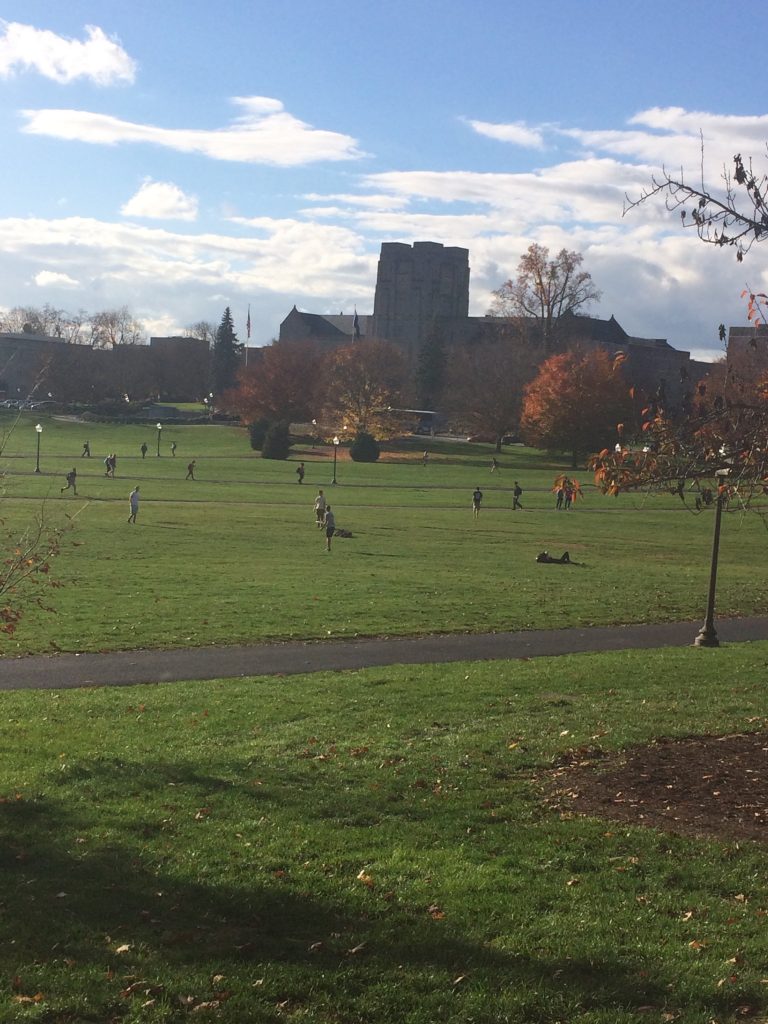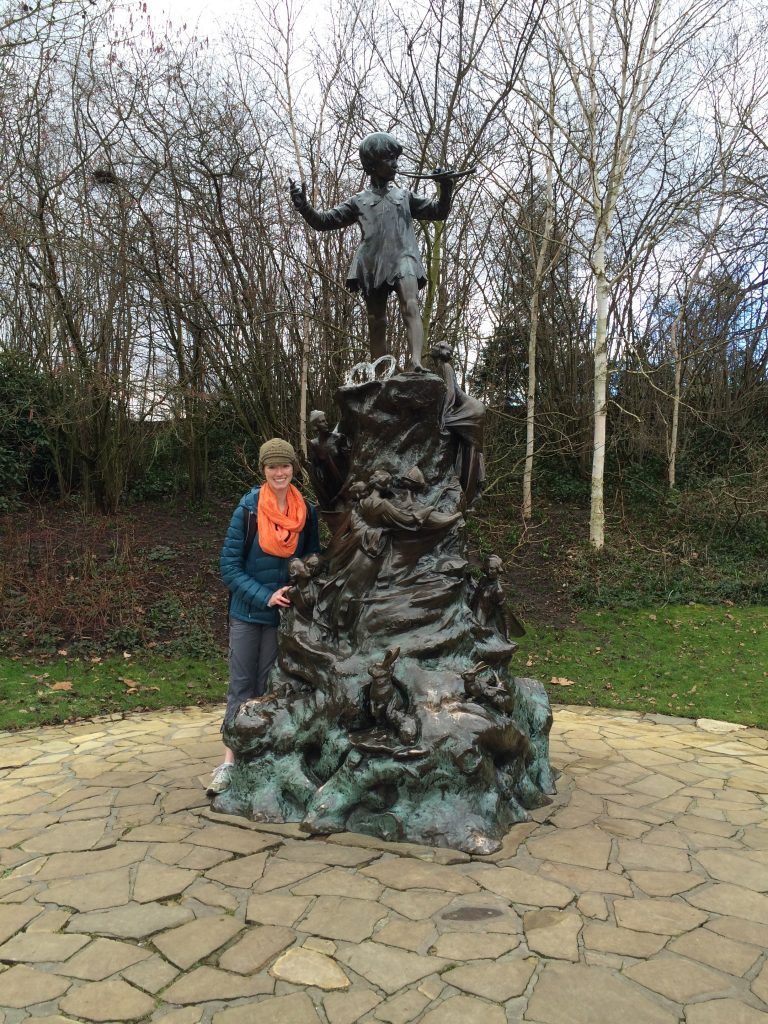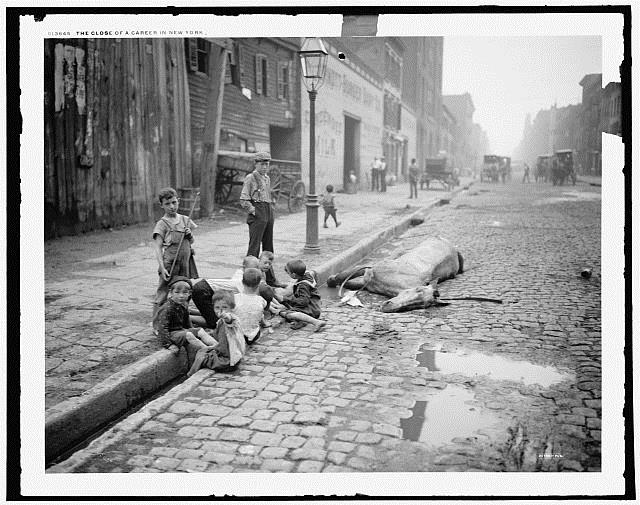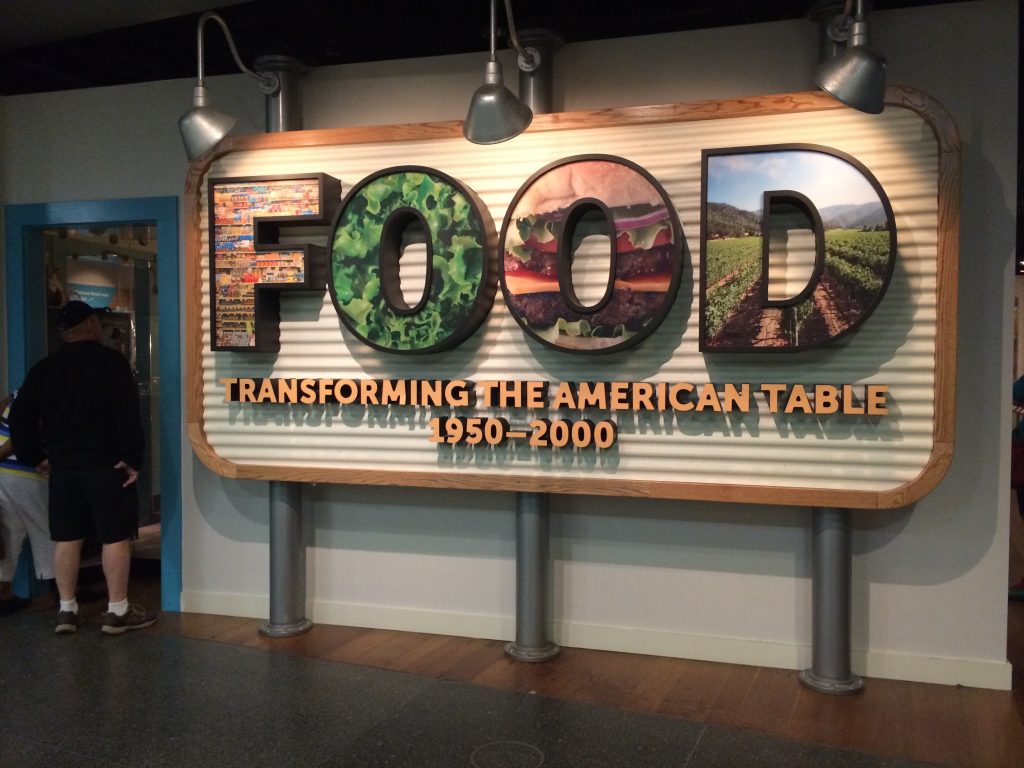Applying for college is stressful enough without having to pick a major. That is why after writing a personal statement, answering philosophical questions in less than 500 words, and providing character references, I wasn’t ready to click a box declaring my plan of study for the next four plus years. The decision seemed binding and final—I clicked “undecided.”

The Virginia Tech campus is centered around Burruss Hall and the Drillfield. The agricultural economics and the history classes were on opposite sides of the Drillfield. Photo by Rachel Snyder
Like many students, I entered college with multiple interests and passions that at first did not seem compatible. At the same time, I did not want to compromise by pursuing one interest over another. I loved history and wanted to improve the sustainability of our planet. As a result, I decided to pursue a dual degree and graduated in May 2016 from Virginia Tech with a bachelor of arts in history and a bachelor in science in applied economic management (or agricultural economics) with a concentration in international trade and development. Pursuing a dual degree enriched my college experience and turned me into a well-rounded scholar capable of performing data analysis alongside historical research and, more importantly, making historical connections to present day economics, politics, culture, and society.
History has always held an important place in my life, and it was one of my favorite subjects in high school. I loved discovering the stories of real people and learning about their impact on the world we live in. I particularly liked searching through the fringes of society to discover bits of history that have been overlooked or deemed inappropriate. As my interests developed in college, I switched from 19th-century British history to late 19th- and early 20th-century environmental history, especially the social and cultural side of environmental history.

Even with the extra credit load of a dual degree, the author was able to indulge in her earlier passion for British history and studied abroad for a semester in England. Photo by Rachel Snyder
As for agricultural economics, I had never taken an economics class before attending college. From living in rural Virginia and taking environmental science in high school, however, I knew that I wanted to major in something related to the environment and agriculture. As a land grant university, Virginia Tech offered several majors dedicated to the study of agriculture and the environment, all of which required that I take a course titled Economics of Food and Fiber Systems. It was the agricultural economics equivalent of macro- and microeconomics. After the first class, I was hooked. Agricultural economics is itself an interdisciplinary study that incorporates environmental science, statistics, human psychology, and, yes, history. Graduates with agricultural economics degrees end up working in everything from marketing to supply chain management for agricultural companies, as economic analysts for the US Department of Agriculture, or as farmers and ranchers.
Initially, when questioned by family and colleagues as to the relevance of my two majors, I connected them by arguing that the history of colonialism and imperialism can help explain the economic situation in developing countries today. However, I discovered soon that the connections went further. This became clear during spring semester of my sophomore year when I took a course in American environmental history. The class helped me understand how factors both large and small—from weather and pollution to refrigeration and pigs—can influence the outcome of major historical events and shape our current food and transportation systems, agricultural and environmental policies, the structure of our economy, and societies’ views and definitions of their environments. For instance, the rise of the automobile in American culture came about partially as a cleaner alternative to the massive problem of “pollution” from horses in urban areas in the late 19th and early 20th centuries. Applying basic economic principles to historic uses of tariffs, rationing, and economic panics also provided a whole new understanding of their impact on historical events.

In addition to the massive amounts of manure produced by city horses, dead horses were a normal sight and contributed to the unsanitary and polluted conditions of late 19th- and early 20th-century cities. Library of Congress
It was also during the same semester I took American environmental history that I also fully realized my love for food studies. The questions of what we eat, where it comes from, its production, and why we eat it blends history, culture, nutrition and health, psychology, economics, policy, and science. Food studies effectively allowed me to combine both my degrees in a meaningful way. My interest in the multifaceted study of food shaped my coursework, research, and internships. I took classes on food economics and marketing. I researched how changing nutritional knowledge and economic conditions led to the rise of the grilled cheese sandwich as a comfort food. As an intern for the Wilderness Road Regional Museum in Dublin, Virginia, I researched and planned a 19th-century historic kitchen garden and heritage orchard, and, in my final proposal, explored the economic and social importance of kitchen gardens and orchards in 19th-century southwest Virginia. After I graduated in May 2016, I spent the summer interning at the Smithsonian National Museum of American History, working on its food and agriculture programs. Specifically, I helped develop a new hands-on daily program where visitors can explore how changes in production technology, cultural perception, and nutrition policy during the late 19th and early 20th centuries transformed wheat and flour production and ultimately created our modern loaf.

During the summer I interned at the Smithsonian National Museum of American History on its food and agriculture programs and extensions of its food exhibit, which includes Julia Child’s kitchen. Photo by Rachel Snyder
When I decided to work towards a dual degree, I knew I was going down a difficult path, especially since my two majors were so different. The hardest part, though, was traversing from one side of campus, where the agriculture classes were, to the other side, where the liberal arts classes were. Currently, I am tapping into upstate New York’s rich history of cheesemaking by interning at an artisanal cheese farm to learn more about farm-level food production and distribution as well as the people who do the work. I am considering going to graduate school for food studies, but ultimately I would like to work in food policy and justice. While I would highly encourage undergraduate students to pursue dual degrees—or double major if the extra credit load is too daunting—there are other ways that students can foster an interdisciplinary approach to their education. I have met engineers who love taking history classes, agricultural economics majors with minors in French, and students with a double major in history and math. Ultimately, it comes down to the students to actively pursue their interests. It might seem like extra work, but I have never known anyone to regret it. I never did.
This post first appeared on AHA Today.
Rachel Snyder is a recent graduate of Virginia Tech with a dual degree in applied economic management and history. She is currently looking to pursue a career in food policy and advocacy, particularly in the areas of cultural foodways preservation, nutrition, and food aid.
Tags: AHA Today What to Do with a BA in History Resources for Undergraduates Food and Foodways Urban History
Comment
Please read our commenting and letters policy before submitting.






